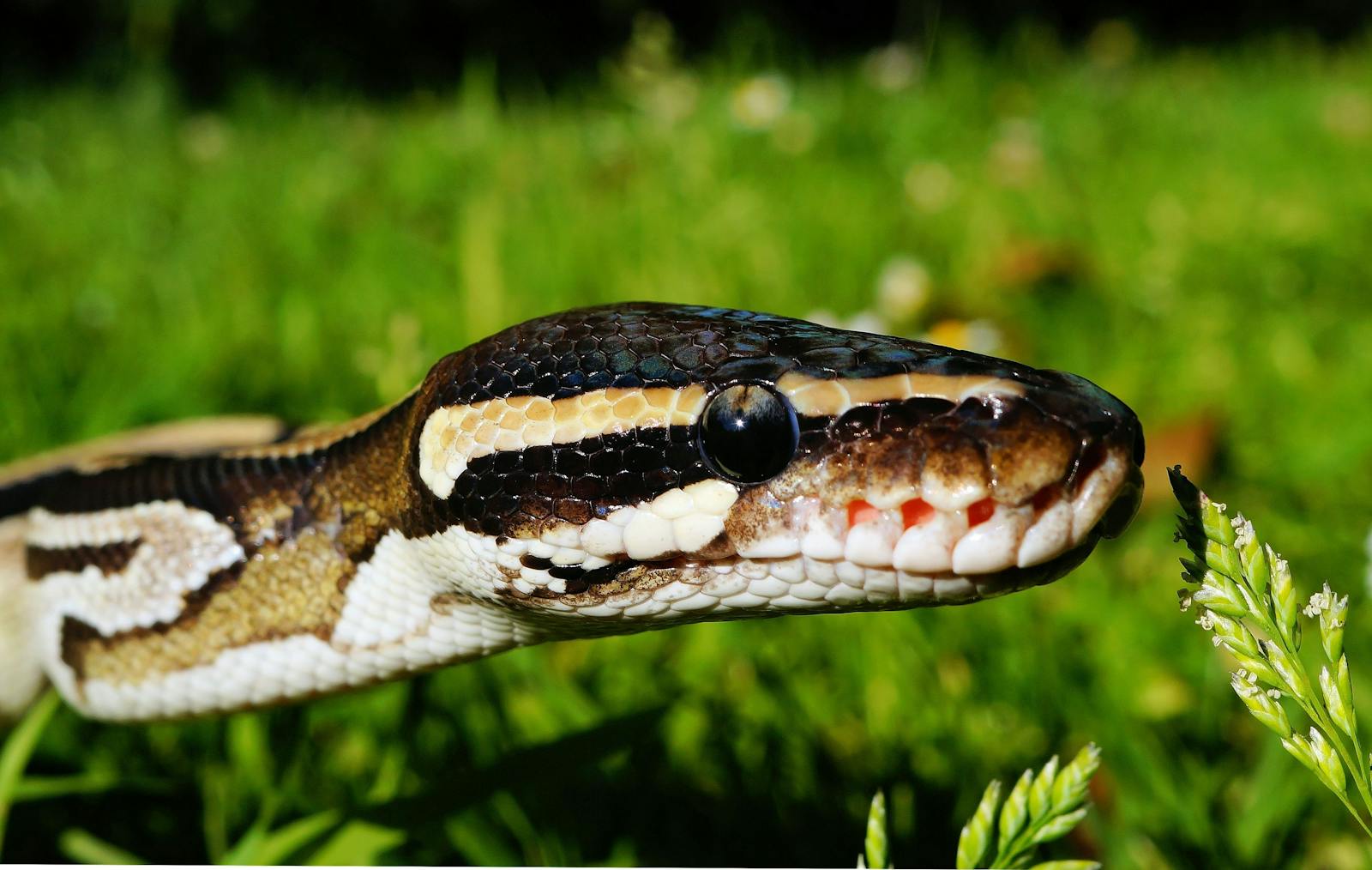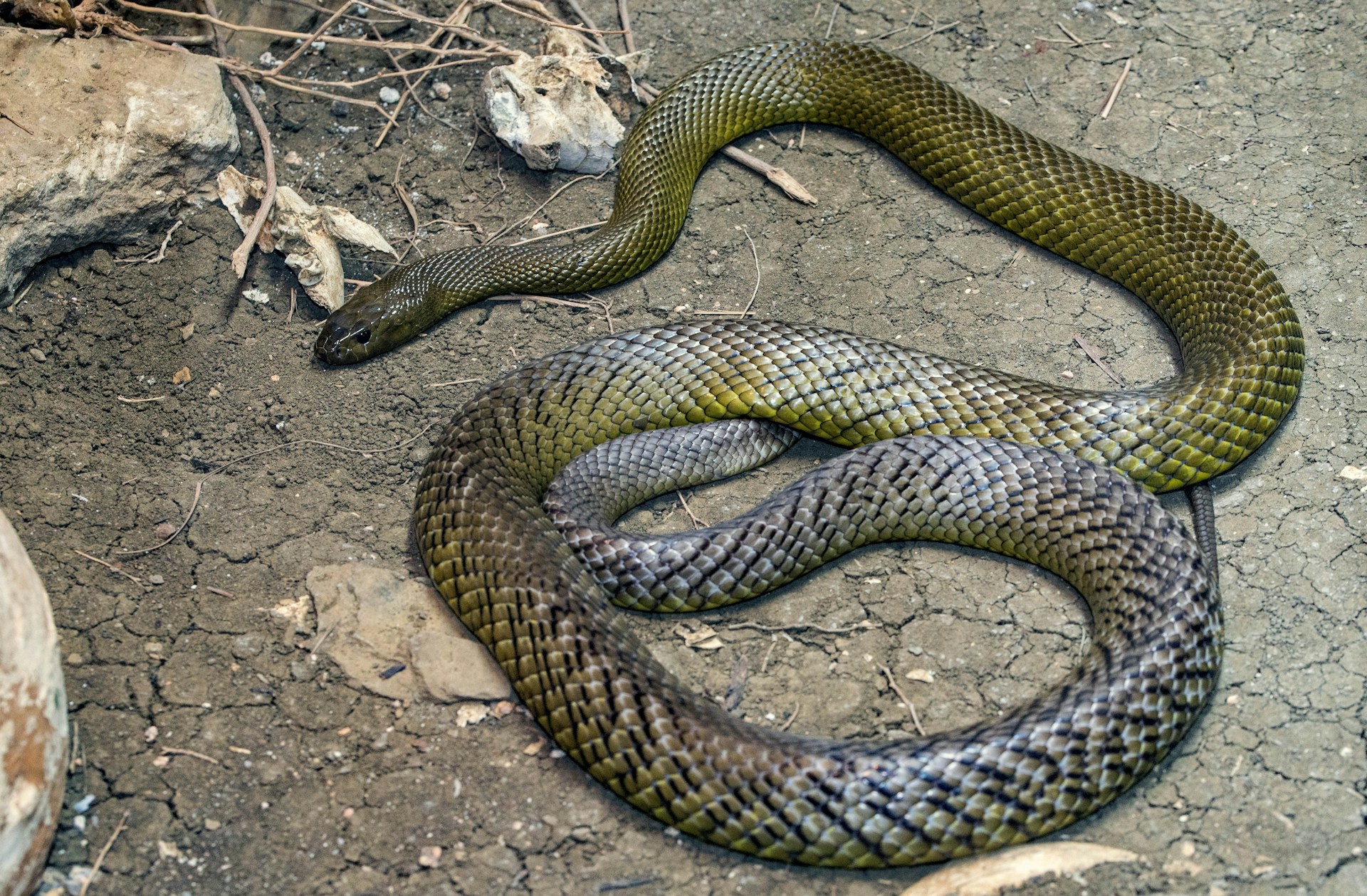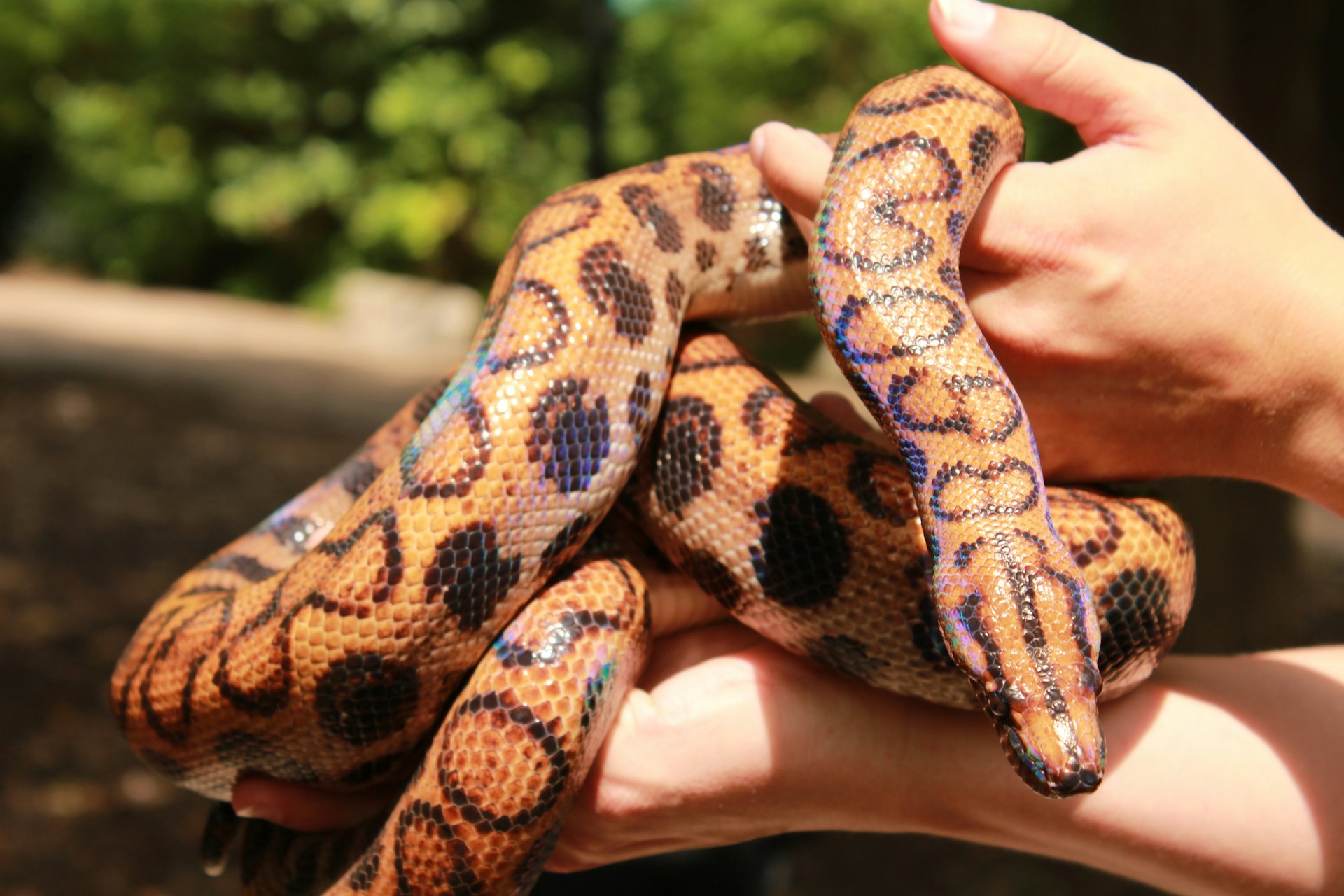The fascination with miniature wonders of nature draws our attention to one of the most remarkable reptiles on Earth – the Barbados Threadsnake (Tetracheilostoma carlae). Measuring merely the size of a quarter when coiled and thinner than a spaghetti noodle, this diminutive creature holds the title of the world’s smallest snake. Discovered relatively recently in 2008 by biologist Dr. Blair Hedges, this tiny serpent has captured the imagination of scientists and nature enthusiasts alike. Despite its minuscule proportions, the Barbados Threadsnake represents an extraordinary example of evolutionary adaptation and specialization. This article explores the remarkable characteristics, habitat, behavior, and conservation status of this fascinating yet often overlooked reptile that reminds us that sometimes nature’s most impressive feats come in the smallest packages.
Discovery and Classification
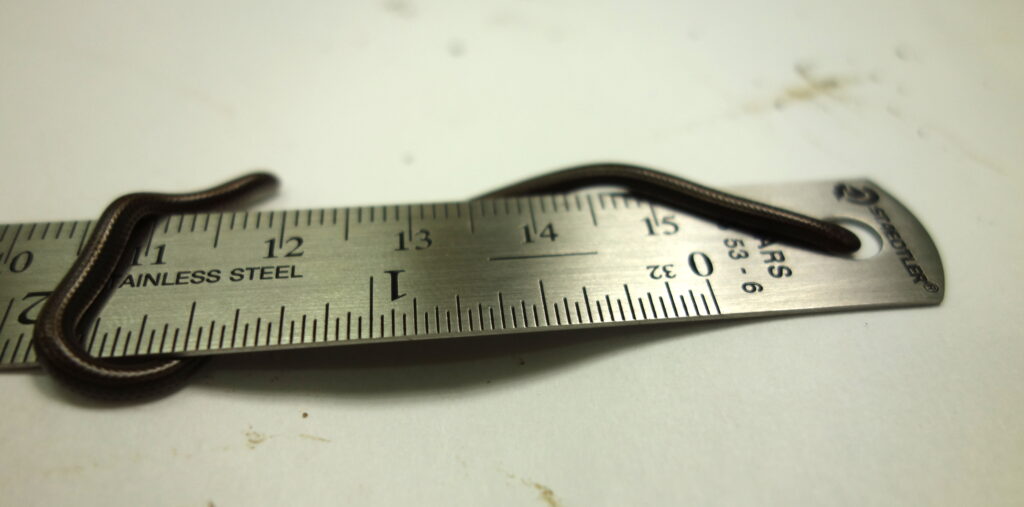
The Barbados Threadsnake was officially described and classified in 2008 by Dr. Blair Hedges, a professor at Pennsylvania State University at the time. This discovery was particularly significant because it represented not just a new species, but potentially the absolute lower size limit for snakes as a group. The snake was named Tetracheilostoma carlae (formerly Leptotyphlops carlae), with the species name honoring Hedges’ wife, Carla Ann Hass, who was also a herpetologist. After its discovery, scientists realized they had previously collected specimens but had misidentified them as juvenile snakes of other species, demonstrating how easily overlooked these tiny creatures can be. The classification places this miniature serpent in the family Leptotyphlopidae, commonly known as threadsnakes or slender blind snakes, a group characterized by their worm-like appearance.
Physical Characteristics

The Barbados Threadsnake exhibits truly remarkable dimensions that push the boundaries of how small a vertebrate can be. Adult specimens typically measure between 10-10.4 centimeters (about 4 inches) in length and are no wider than 2.5-3 millimeters—comparable to the width of a spaghetti noodle or a common earthworm. Their weight is equally impressive, with adults tipping the scales at less than 1 gram, making them lighter than a penny. The snake’s body is a glossy, dark brown to black color with a slightly lighter underside, helping it blend seamlessly with the soil in which it spends most of its time. Unlike larger snakes, the Barbados Threadsnake has scales that are proportionally larger relative to its body size, and it possesses tiny, barely visible eyes covered by scales—an adaptation to its subterranean lifestyle where vision is less important than other senses.
Evolutionary Significance
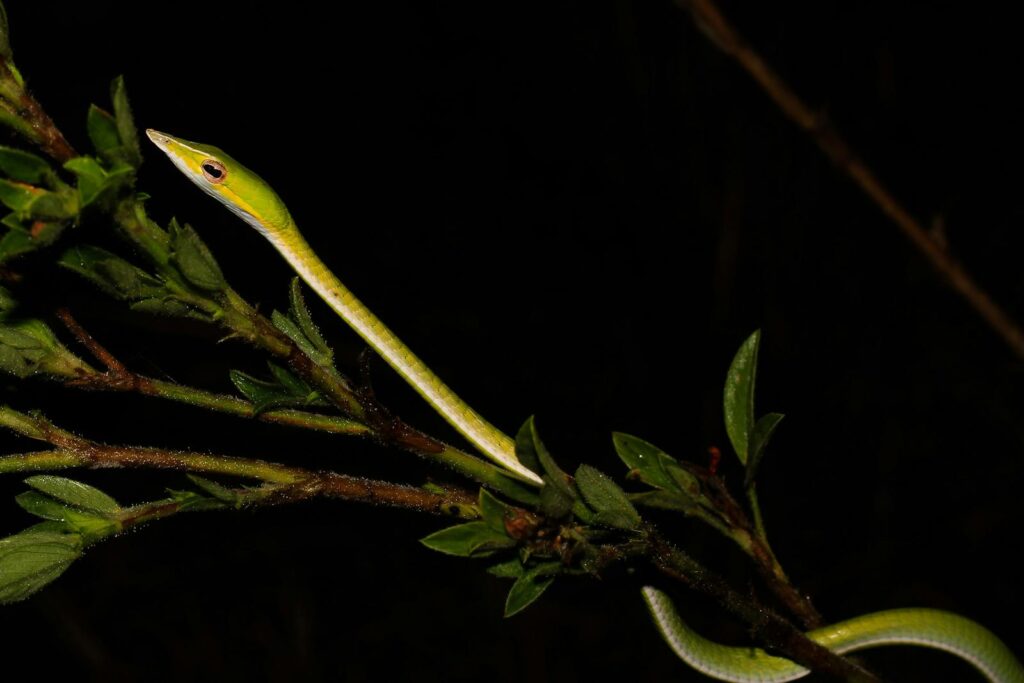
The minute size of the Barbados Threadsnake represents a fascinating case study in evolutionary biology, particularly regarding the concept of island dwarfism. Scientists believe that the snake evolved its exceptionally small size due to the limited resources available on the small island of Barbados, demonstrating how environmental pressures can drive extreme adaptations. Dr. Hedges has proposed that the Barbados Threadsnake may represent the absolute lower size limit for snakes, as any smaller and the reptile would be unable to produce viable offspring—female threadsnakes typically lay a single, relatively large egg that can be half the mother’s body width. This evolutionary constraint is known as the “one-egg rule,” suggesting that the need to produce at least one offspring of viable size prevents further miniaturization. The snake’s existence challenges our understanding of the physiological and reproductive limits of vertebrate animals.
Habitat and Distribution
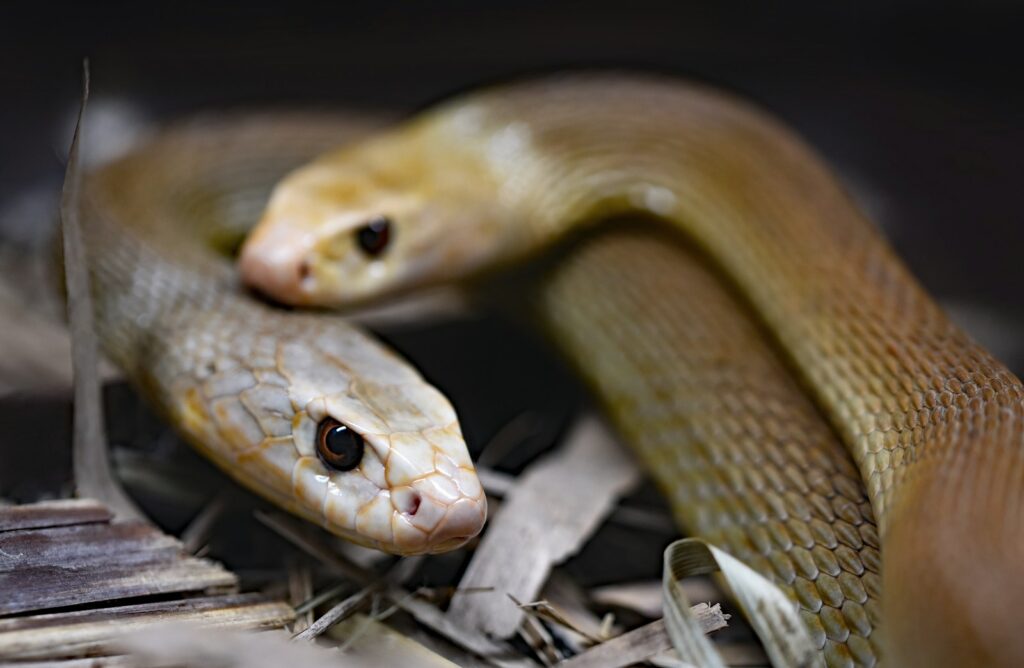
The Barbados Threadsnake is endemic to the Caribbean island of Barbados, meaning it is found nowhere else on Earth naturally. Its distribution is extremely limited, with the species confined to small patches of remaining forest in the northern and eastern parts of the island. These snakes inhabit the leaf litter and loose soil of forested areas, where they burrow beneath the surface in search of prey and shelter. The specific microhabitat requirements of these snakes include areas with enough moisture to prevent desiccation of their tiny bodies and sufficient leaf litter to support their invertebrate prey. Unfortunately, much of the snake’s natural habitat has been destroyed or severely fragmented due to agricultural development and urbanization on Barbados, with some estimates suggesting that less than 2% of the island’s original forest cover remains intact. This habitat specialization, combined with the snake’s limited range, makes it particularly vulnerable to environmental changes.
Diet and Feeding Behavior
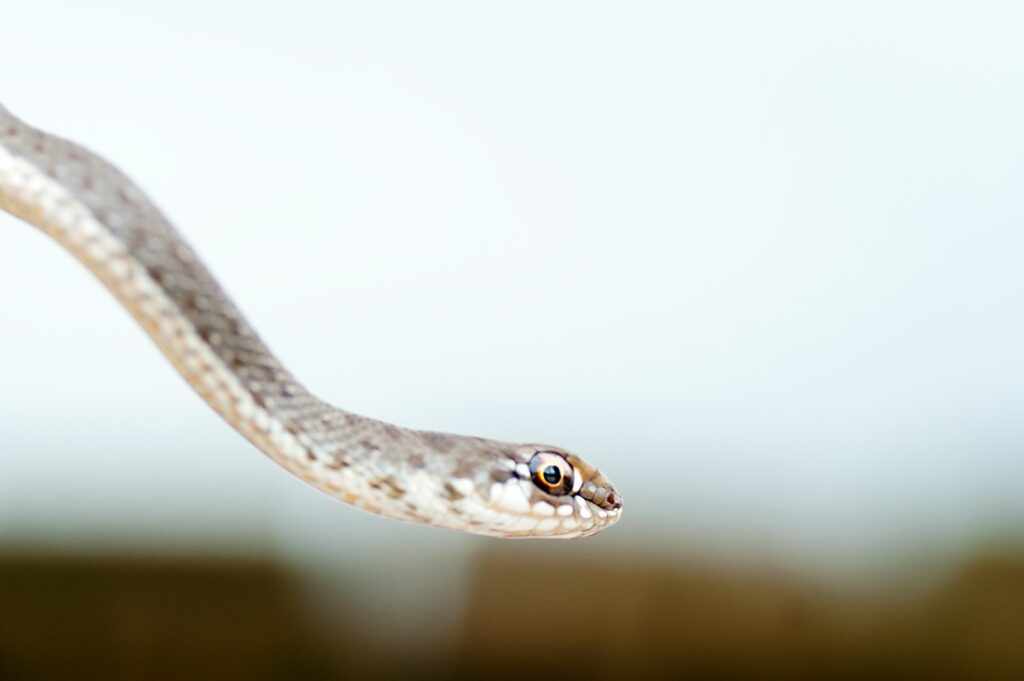
Despite its minuscule size, the Barbados Threadsnake is a predator with a specialized diet consisting primarily of the larvae and eggs of ants and termites. Their feeding strategy reflects incredible evolutionary adaptation, as they must consume prey small enough to fit in their tiny mouths yet nutritious enough to sustain their energy needs. When hunting, the threadsnake uses chemical cues to locate its prey, as its vision is extremely limited. The snake’s feeding behaviors are well-suited to its subterranean lifestyle, allowing it to silently move through ant and termite nests, consuming the immature stages without confronting the adult insects that could potentially harm it. This dietary specialization represents a fascinating ecological niche, as the threadsnake has evolved to exploit food resources that are too small for larger predators, thus avoiding competition while ensuring a relatively stable food supply in its limited habitat.
Reproductive Strategies
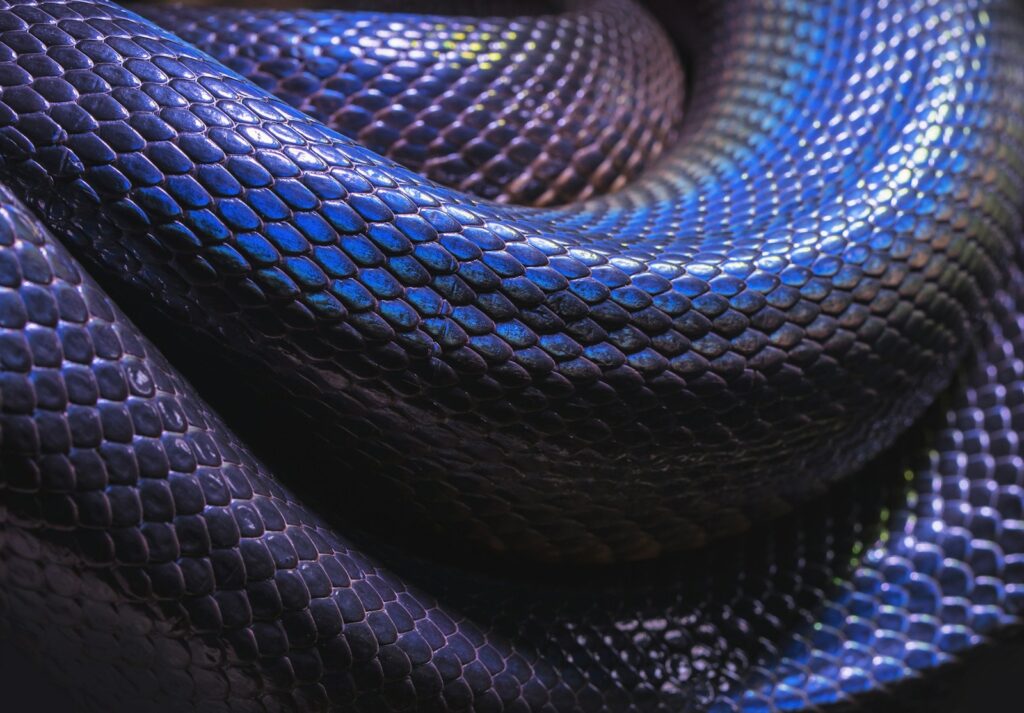
The reproductive biology of the Barbados Threadsnake presents one of the most fascinating aspects of its natural history. Unlike many snake species that lay clutches of multiple eggs, the female threadsnake typically produces just a single, elongated egg—a strategy necessitated by its extremely small body size. This single egg is proportionally enormous, measuring approximately half the width of the mother’s body, representing perhaps the largest egg-to-body ratio of any amniote animal. After laying this solitary egg, the female provides no parental care, leaving the hatchling to fend for itself once it emerges. The hatchlings are remarkably large in proportion to adults, measuring about half the length of their parents upon hatching, which means they’re born relatively well-developed and capable of hunting almost immediately. This reproductive strategy represents an extreme form of K-selection, where quality of offspring is prioritized over quantity, allowing the species to maintain viable populations despite their low reproductive output.
Locomotion and Movement
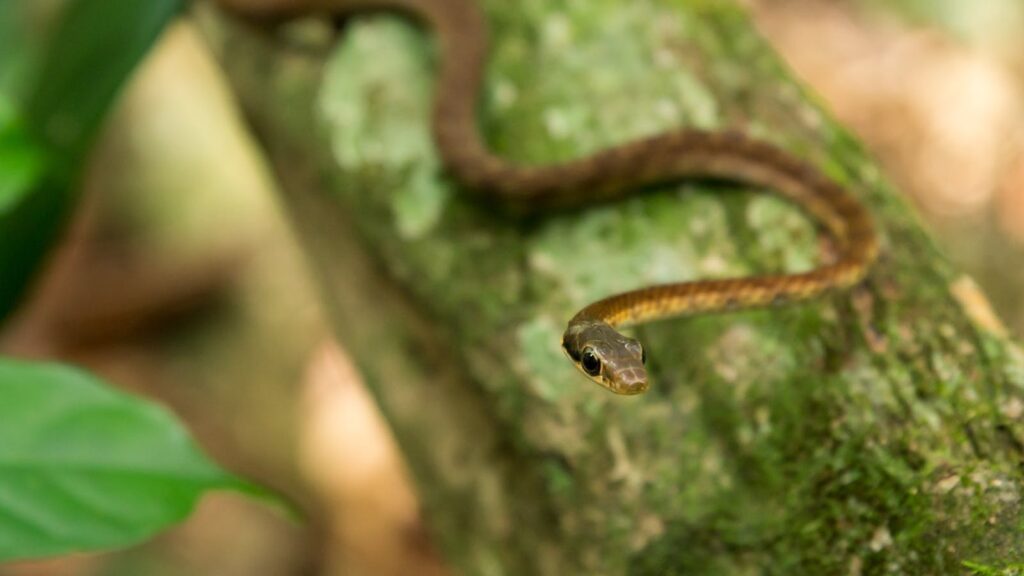
The Barbados Threadsnake employs several specialized movement techniques adapted to its diminutive size and subterranean lifestyle. Rather than the typical serpentine motion used by larger snakes on open ground, threadsnakes primarily use rectilinear locomotion—a straight-line crawling motion where the scales on their bellies grip the substrate and pull the body forward in a manner somewhat reminiscent of earthworm movement. When burrowing through soil or leaf litter, they use a technique sometimes called “tunnel swimming,” where they push their pointed heads forward and wriggle their bodies to move particles aside. Their polished, glossy scales reduce friction as they move through substrate, allowing them to slip through tiny spaces with minimal effort. The snake’s proportionally large scales relative to its body size provide excellent purchase in loose soil, enabling effective movement despite the creature’s minimal muscle mass and extremely slender body.
Defensive Behaviors
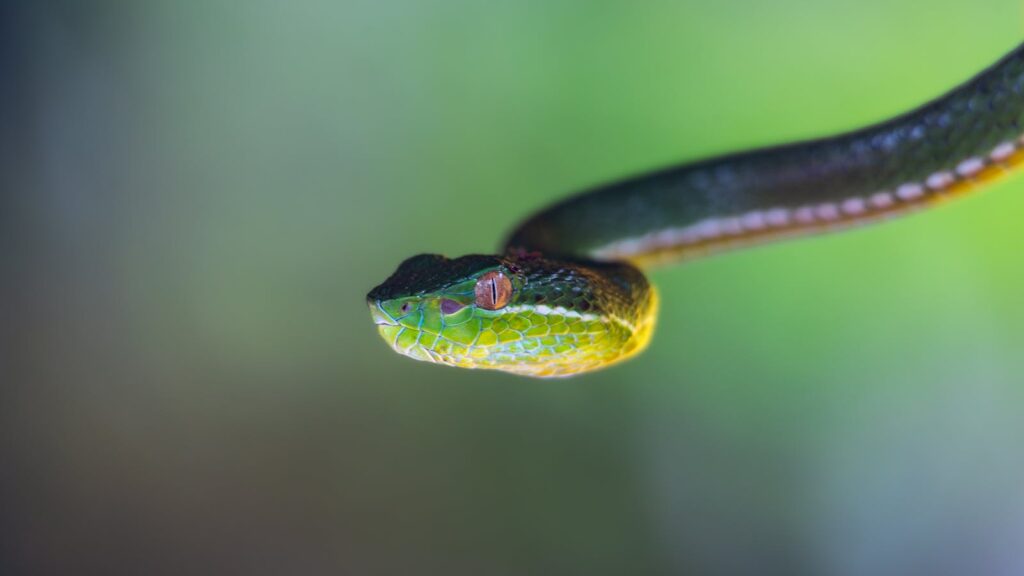
Given its extraordinary vulnerability due to its size, the Barbados Threadsnake relies primarily on concealment rather than active defense against predators. When threatened or disturbed, these snakes typically respond by increasing their burrowing activity, attempting to escape deeper into the substrate rather than confronting potential threats. If captured or handled, they may thrash or wriggle vigorously, but they lack any means of causing harm to predators—they have no venom and their mouths are far too small to bite most potential threats effectively. Some individuals may also release a musky secretion when handled, which might serve as a mild deterrent to certain predators. The snake’s dark coloration serves as effective camouflage in its natural environment of soil and leaf litter, making it nearly invisible to passing predators like birds, larger reptiles, and mammals that might otherwise prey on these tiny serpents.
Conservation Status and Threats

The Barbados Threadsnake faces numerous conservation challenges that threaten its long-term survival. Although it hasn’t been formally assessed by the IUCN Red List, experts consider it vulnerable or endangered due to its extremely limited range and specific habitat requirements. The primary threat to the species is habitat loss, as Barbados has experienced extensive deforestation, with estimates suggesting that less than 2% of the island’s original forest cover remains intact. Urbanization, agricultural development, and tourism infrastructure have all contributed to the destruction of the snake’s forest habitat. Additional threats include invasive species such as the mongoose, introduced to Barbados to control rats but now predating on native wildlife including small reptiles. Climate change poses another significant concern, as rising temperatures and altered precipitation patterns may affect soil moisture levels critical for the snake’s survival. Conservation efforts are hampered by limited public awareness about this cryptic species and the challenges of protecting organisms that spend most of their lives hidden underground.
Research Challenges
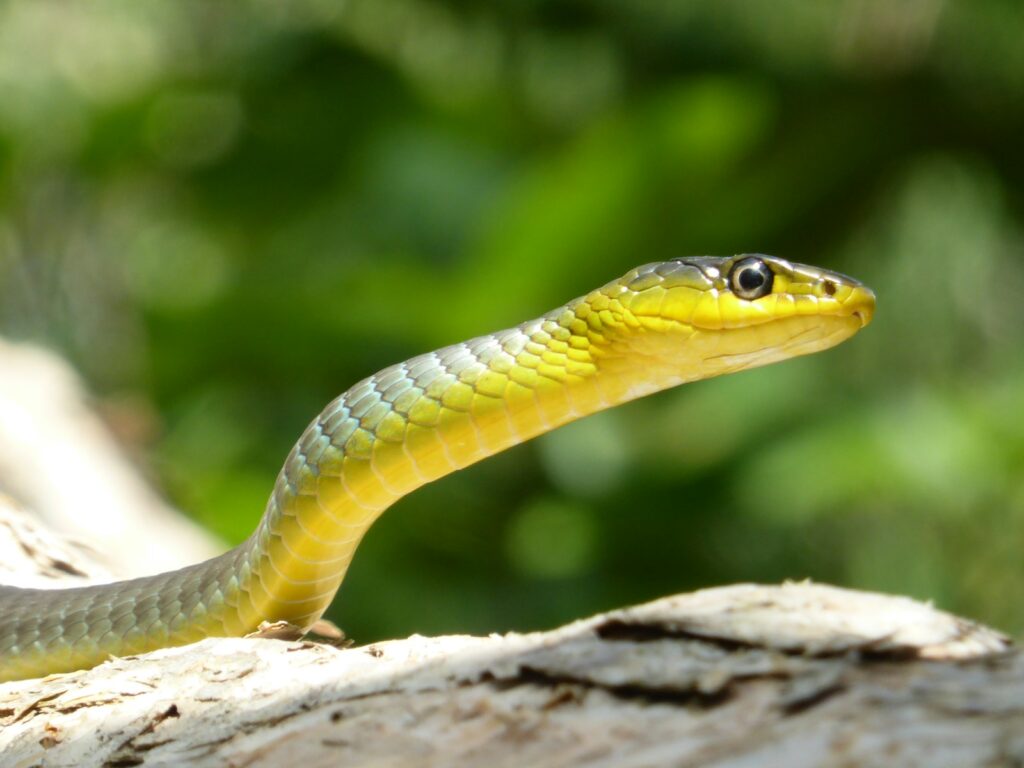
Studying the Barbados Threadsnake presents numerous challenges that have limited our scientific understanding of this extraordinary species. Their minuscule size makes them exceedingly difficult to locate and observe in the wild, as they spend most of their time burrowing beneath the soil and leaf litter. Traditional wildlife tracking methods are impossible to apply to creatures weighing less than a gram, and even the most delicate radio transmitters would be prohibitively heavy for such tiny animals. The snakes’ cryptic nature and similarity to earthworms means they are easily overlooked during field surveys, further complicating population assessments. Laboratory research presents its own difficulties, as maintaining appropriate conditions for such specialized animals is challenging, and their specific dietary requirements are not easily replicated in captivity. Consequently, significant gaps remain in our knowledge about their lifespan, population dynamics, detailed behavior patterns, and even basic ecological relationships.
Comparison to Other Miniature Snakes
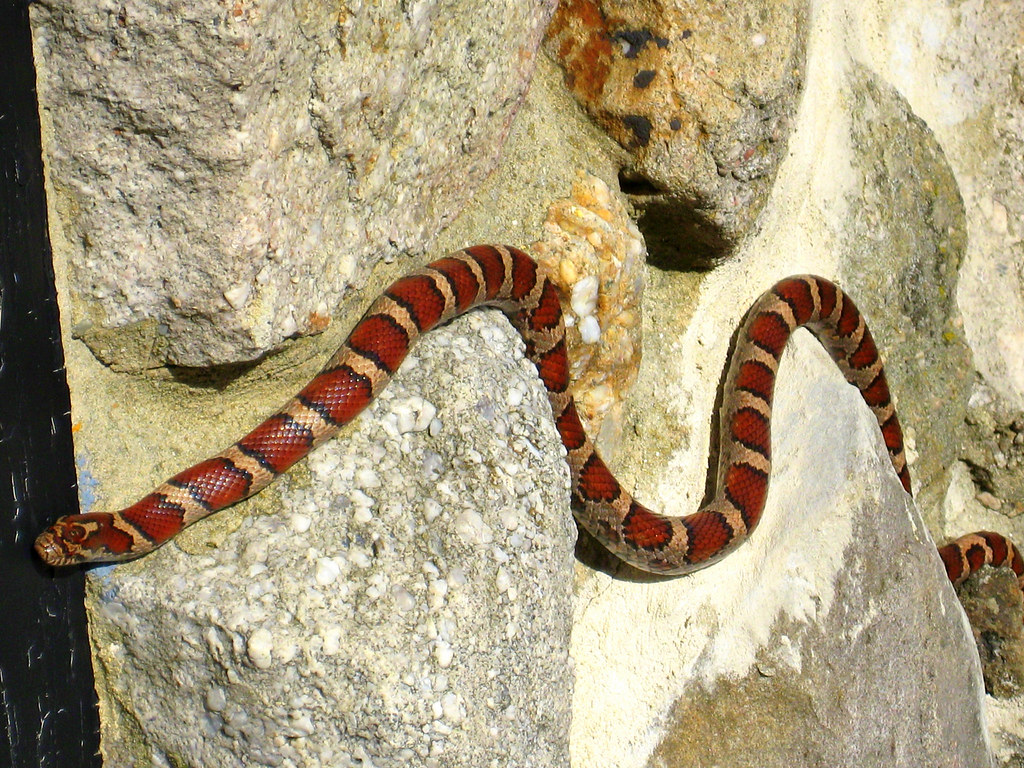
While the Barbados Threadsnake holds the title for the world’s smallest snake, several other diminutive species deserve mention in any discussion of miniature serpents. The Brahminy Blind Snake (Indotyphlops braminus), measuring around 10-15 cm, is slightly larger but noteworthy as the only known snake species to reproduce through obligate parthenogenesis, with all individuals being female. The Western Threadsnake (Rena humilis) of North America typically reaches 20-30 cm and inhabits similar ecological niches to its Barbadian relative. Another notable contender is the Slender Blind Snake (Leptotyphlops bilineatus) from South America, which reaches approximately 15 cm in length. What distinguishes the Barbados Threadsnake from these near competitors is not just its smaller size, but its extreme egg-to-body size ratio, which represents a remarkable reproductive adaptation. These various miniature snake species demonstrate convergent evolution, with similar body forms and ecological roles evolving independently in different regions, all adapted to exploit the subterranean micro-habitats and food resources unavailable to larger serpents.
Cultural and Scientific Significance
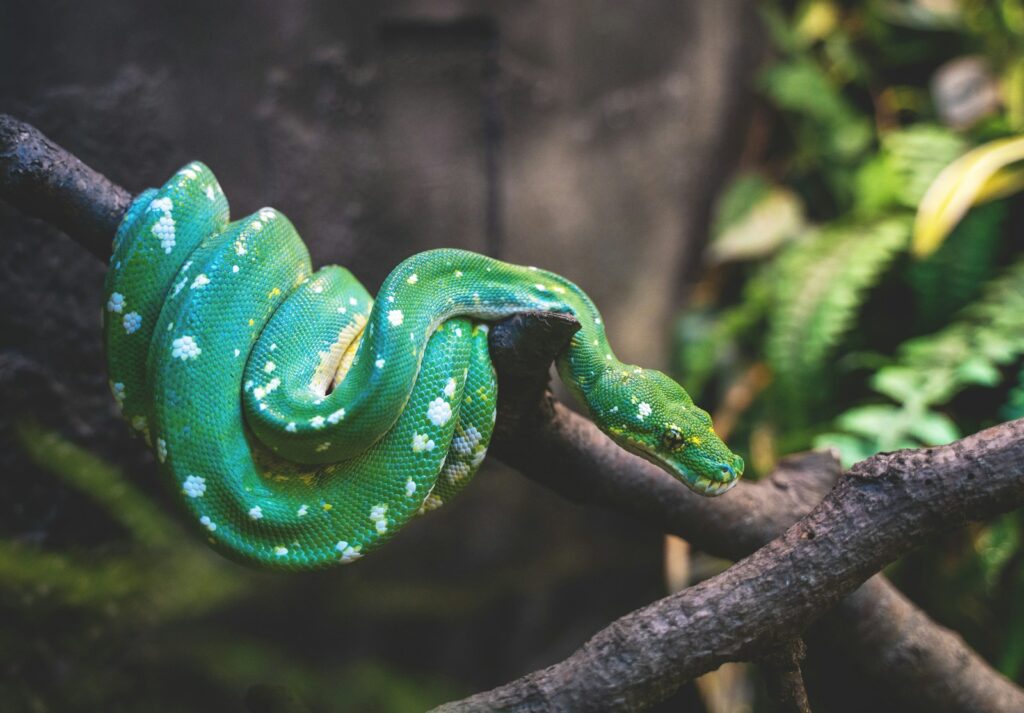
The discovery of the Barbados Threadsnake generated considerable scientific interest and media attention, highlighting the fact that even in the 21st century, remarkable new species continue to be found. In scientific circles, the snake has become an important case study in discussions about evolutionary constraints, island biogeography, and the physiological limits of vertebrate miniaturization. For the island of Barbados, the threadsnake represents a unique natural heritage symbol, though awareness among local populations remains limited due to the snake’s secretive nature. Unlike many larger snake species that feature prominently in human cultures worldwide, the Barbados Threadsnake has not had time to establish a significant cultural footprint since its recent scientific description. Nevertheless, its existence serves as a powerful reminder of biodiversity’s intrinsic value and the importance of protecting even the smallest and least conspicuous species. The snake’s discovery underscores the critical importance of preserving remaining forest fragments on Barbados, which likely harbor additional undiscovered endemic species.
Conservation Efforts and Future Prospects
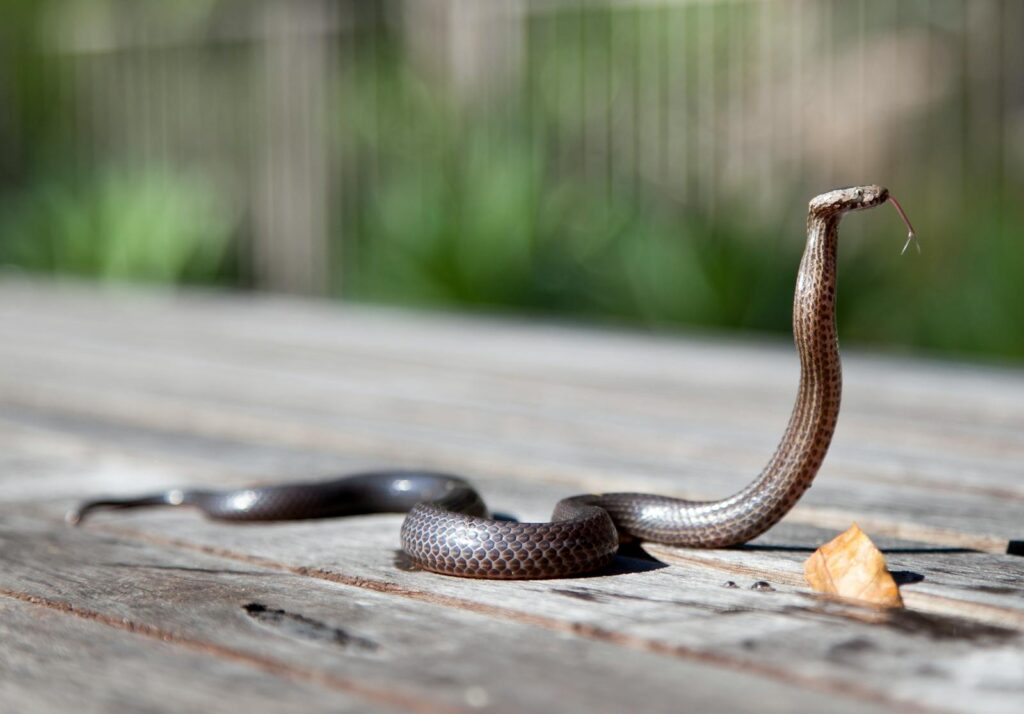
Conservation initiatives for the Barbados Threadsnake remain in nascent stages, though awareness is gradually increasing among conservation organizations and local authorities. The Barbados Natural Heritage Department has begun incorporating the protection of remaining forest fragments that harbor the snake into their management plans, recognizing the global significance of this endemic species. Several international herpetological organizations have advocated for more comprehensive surveys to better understand the snake’s distribution and population status. One promising development involves collaboration between local conservation groups and international researchers to establish protected micro-reserves specifically designed to safeguard the snake’s habitat. Education programs targeting local communities have been implemented to raise awareness about this unique natural treasure and reduce habitat destruction. Despite these efforts, the long-term survival of the species remains uncertain without more decisive action to preserve and restore the island’s dwindling forest habitats. The future of this remarkable evolutionary marvel ultimately depends on humanity’s willingness to recognize and protect biodiversity at all scales—even when it comes in packages smaller than a paperclip.
Conclusion
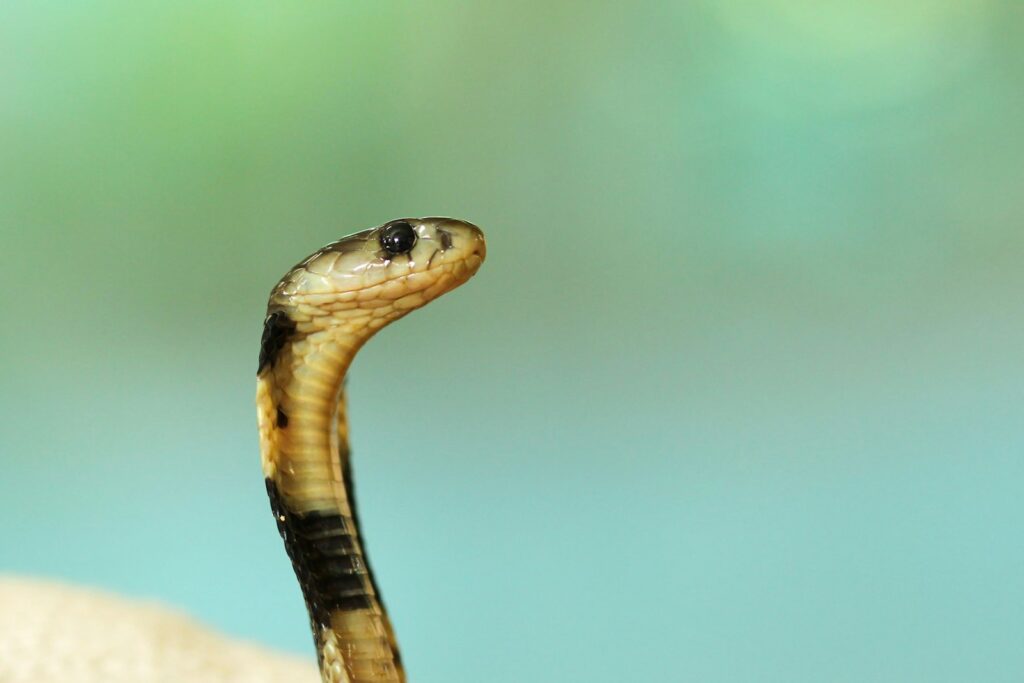
The Barbados Threadsnake stands as a remarkable testament to the incredible diversity of life on our planet and the extraordinary adaptations that evolution can produce. Despite its minuscule size, this tiny serpent offers outsized lessons about the biological limits of vertebrate miniaturization, specialized ecological niches, and the vulnerability of island endemics. As one of Earth’s smallest vertebrates, it reminds us that conservation efforts must extend beyond charismatic megafauna to include the protection of even the tiniest creatures, which often play crucial ecological roles despite their diminutive dimensions. The continued existence of the Barbados Threadsnake, surviving against the odds on an island transformed by human activity, provides hope that with proper awareness and conservation measures, even the smallest and most vulnerable species can persist into the future, enriching our understanding of life’s remarkable diversity.


